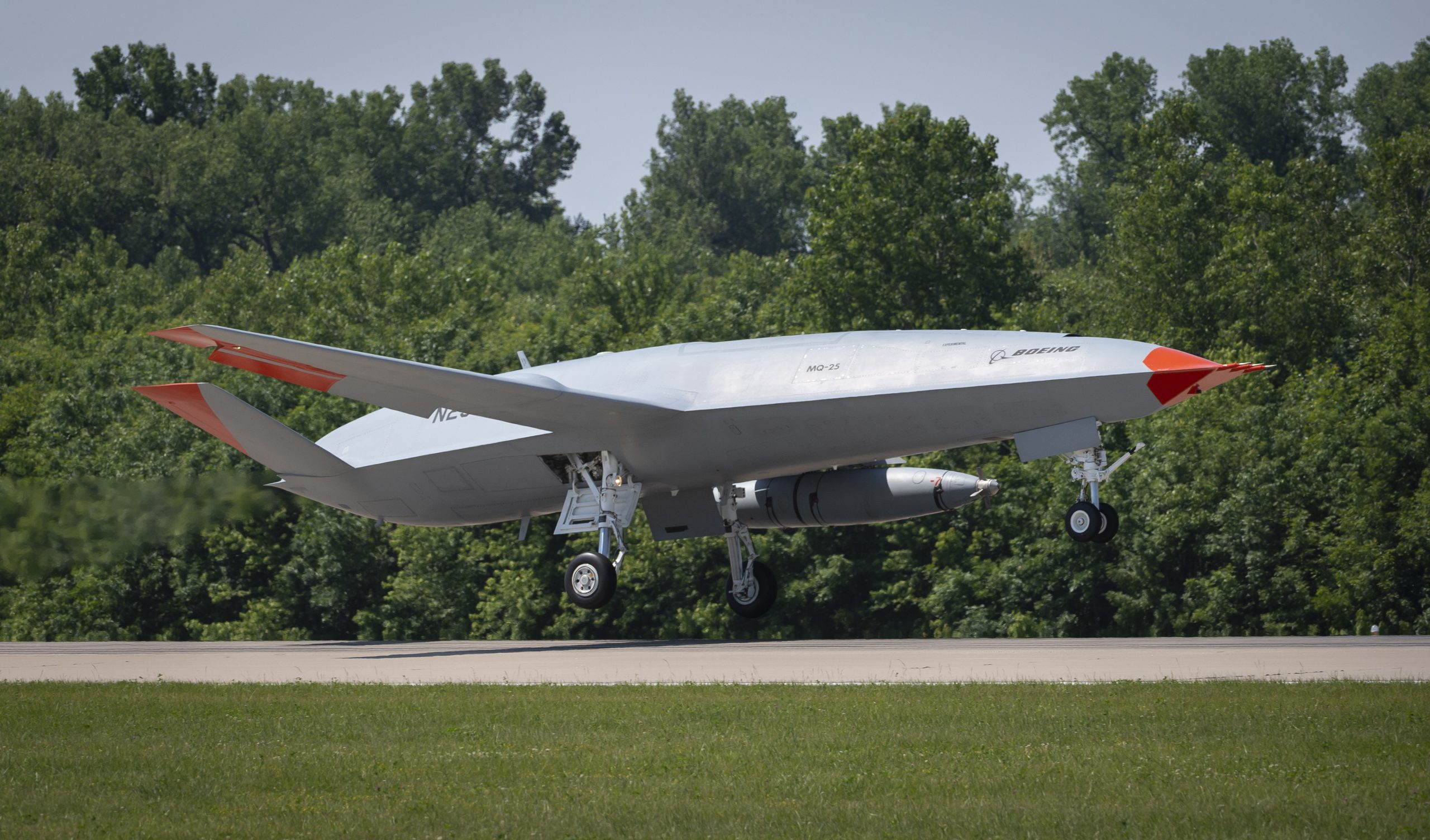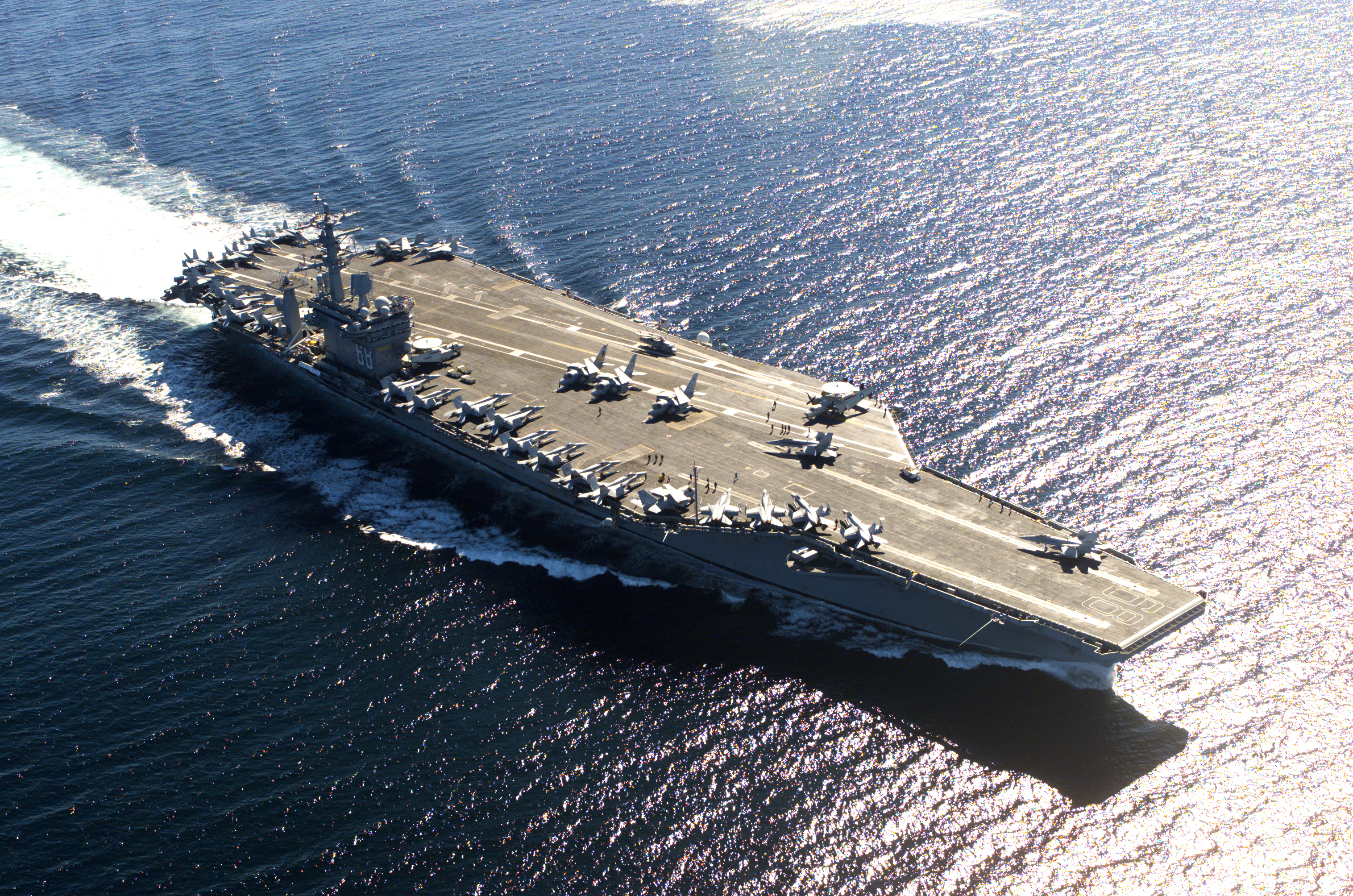The US Navy regularly cites the importance of carrier-compatible combat drones for future warfare. After years of testing and planning, the service is finally considering developing such an unmanned combat aerial vehicle (UCAV) for its carrier air wings.
This time, it is banking on the MQ-25 robotic tanker, the only unclassified drone to come up from the previous experiments. The Navy is thinking of upgrading its MQ-25 long-range tanker drone into an attack aircraft.
However, there first has to be a lengthy, multi-step process of testing and development. In the 2000s, US defense company Northrop Grumman was tasked with building the X-47B strike drone, capable enough to land on an aircraft carrier and fly alongside manned aircraft.

The Navy, however, shifted the program to build a tanker drone with much more limited strike capability, hiring Boeing to build the MQ-25.
The military saw unmanned strike drones as critical assets as China is already developing missiles capable of hitting aircraft carriers from 1,500 kilometers away.
MQ-25 Stingray
The MQ-25 Stingray is a next-generation unmanned aerial refueling aircraft being developed by Boeing for the US Navy’s Carrier-Based Aerial-Refueling System (CBARS) program.
The UCAV completed its maiden test flight in September 2019 and received an experimental airworthiness certificate from the Federal Aviation Administration (FAA).
The aircraft’s initial combat readiness is expected to be finished by 2024. The UCAV will help reduce reliance on F/A-18E/F combat strike fighters for tanking tasks while increasing their availability for strike fighter missions.
The MQ-25 could be outfitted with sensors, weapons for intelligence, surveillance, and reconnaissance (ISR) as well as light strike missions. The 51-foot subsonic drone with its top-mounted intake has a radar. Its 500-mile range and eight-ton payload are comparable to that of a manned fighter.
Earlier this year, Rear Adm. Gregory Harris, the chief of naval operations’ air warfare directorate, stated that the Navy will approach its next-generation air dominance (NGAD) program as a “family of systems,” employing aircraft, sensors, and other equipment that complement one another and work together to counter threats.

Harris went on to say that the NGAD could eventually replace the E-2 Hawkeye radar plane, noting that “we will have to replace the E-2D sometime in the future”.
Although the US Air Force refers to these combat drones as “loyal wingmen”, Harris started referring to them as “little buddies” informally. Additionally, these drones could be used as adjuncts to electronic warfare or early warning platforms.
Navy’s NGAD Plans
According to Harris, the Navy NGAD Program includes at least two points. The first is to research alternatives for the Super Hornet, which remains the tactical backbone of the carrier air wing, while the second is focused on a successor to the Growler.
Despite talk of a manned Super Hornet successor, Harris believes that the future carrier air wing will be dominated by unmanned platforms. He stated that the service intends to transition to a 40-60 unmanned-manned split before eventually transitioning to a 60-40 unmanned-manned split.
The Navy announced earlier this year that it intends to modify the Advanced Hawkeye’s mission computer so that it can also serve as a drone controller as part of a manned-unmanned teaming experiment. Off-ship command and control of the MQ-25, as well as future drones, would be possible with these types of upgrades.
The Navy intends to purchase more than 70 MQ-25s for approximately $13 billion. At least five of the drones could be assigned to each of the nine carrier air wings. The Navy is installing drone control rooms on each of the fleet’s 11 aircraft carriers. Sailors are practicing flying drones on crowded carrier decks using wrist-worn controllers.

For a long time, the US Navy has been attempting to develop a carrier-based drone. The service purchased a few model 147 reconnaissance drones from Ryan Aeronautical and launched the subsonic vehicles 28 times from the deck of USS Ranger off the coast of North Vietnam in late 1969.
The Model 147s took images of North Vietnamese forces as intended, but the Navy felt that the drones’ launch method, which involved a rocket launch from an angled ramp, was too disruptive to normal flying operations.
As a result, the Navy shelved the idea of a carrier drone until it could be launched in the same manner as manned planes using a catapult. The Navy and the US Air Force collaborated in the late 1990s to create stealthy, weapons-capable subsonic jet drones.
The Boeing X-45 and Northrop Grumman X-47 drones, which were top choices of the Air Force and Navy, were the feats of engineering. However, inter-service handwringing cursed the collaborative effort.
The US Navy believes that in the future, over two-thirds of the aircraft operating from its carriers will be unmanned, including the possibility of drone fighter jets. On the other hand, Air Force officials are attempting to determine the correct balance of aircraft for the future inventory as part of the ongoing “TacAir study,” as well as how future fighter concepts will fit into the existing combination of fourth- and fifth-generation fighters.
- Contact the author at ashishmichel@gmail.com
- Follow EurAsian Times on Google News




